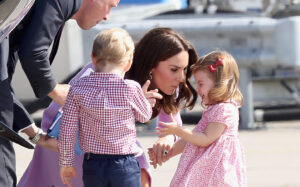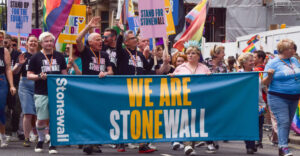It seems that things are going to the dogs across the Channel. It’s not just that the French birth rate, educational standards, and the homegrown car industry are all in decline; nor even that the homicide rate, Americanisms, and fast-food outlets are surging. It’s even worse than that: a short-haired, flat-chested woman was just crowned Miss France. Though the public vote in Saturday’s televised final went to two more generously appointed and traditionally becoiffed contestants, in a shock move, the all-female judging panel ranked a pixie-cutted maths graduate called Eve Gilles — otherwise known as Miss Nord-Pas-de-Calais — above both of them.
The decision has apparently caused outrage in some of the show’s seven million viewers, who are complaining that the event has succumbed to “le wokisme”. The timing of the decision seemed to some particularly suspicious, arriving only a fortnight after the programme’s production company was ordered to pay two former competitors compensation for showing hidden camera images of their unclothed breasts — almost as if those in charge wished subliminally to convey to viewers that, in terms of bosom-related content at least, there was now quite literally nothing to see here. Whether or not this was a real factor in the decision, it’s certainly true that Gilles’s look has been claimed as a win for “diversity”, which is probably quite irritating for the two Afro-Caribbean women she beat to first place.
Gilles’s victory follows earlier relaxations of traditional Miss France etiquette, each of them controversial in their own right. First came a change in the eligibility rules in 2019, allowing biological males to enter if they were legally female. Then last year, apparently even more radically for stalwarts, the event was opened up for the first time to females who had given birth, got married, were over the age of 24, and who had tattoos or body piercings. In what she claimed was a historic milestone at the time, a mother of a toddler won the regional heat Miss Alpes-du-Sud in March, causing another delegate to declare that this was “going to cause a stir, because there have already been young married women or young women a little older than 24, but a mum is a really big leap”.
Arguably though, with the exception of the edict about tattoos and piercings, these rule changes were not particularly threatening to the status quo. In practice, for a while it seemed as if they would make no difference to the sempiternal formula for a Miss France winner: voluminous hair, big teeth, an hourglass figure, and eyes sufficiently wide apart that you look ever-so-slightly like a startled faun. Indeed, up until this week, it seemed that whether you were virginal, married, a mother of 12, or indeed biologically male, in reality you could only get somewhere in the pageant by fitting this exact physical template. But then came Gilles and the old certainties collapsed. In French beauty competitions, it turns out that cosmetic changes are the most revolutionary.
Interviewed after her win, Gilles said she had deliberately chosen an “androgynous, more masculine look with short hair” in order to “talk about the body shaming we have to put up with every day. We all have our imperfections.” At first glance, that short hair on a woman could count as “masculine” and a flat chest as “imperfect” might seem a sign only of how ridiculously tightly the French conception of femininity is always gathered. But then you remember that this is also the country that gave us the concept of a gamine, and the iconic image of Jean Seberg in Jean-Luc Godard’s Breathless (A Bout de Souffle) — in other words, hardly a culture unappreciative of female tomboyishness. Indeed, France also gave us the concept of the jolie laide, and has presented for our delectation such fabulously elegant examples as Simone Signoret, Charlotte Gainsbourg, and Camille Cottin. In short, though no one could pretend the visual norms operative on French womanhood are particularly relaxed, it would still be an exaggeration to suggest that every woman there is expected to look like an old-fashioned Fifties beauty queen.
On second thoughts, then, it seems that this controversy is less a dispute about whether general beauty standards for women should be more “diverse”, and more like an argument between Crufts’ judges about whether a spaniel’s ears should be well-feathered or not — which is to say, a highly technical discussion, and not of much relevance to the rest of us. Essentially, people are fighting about the appropriate aesthetic standards for beauty queens — a specialised genre all of its own — and not about standards for women generally. What looks perfectly normal and even wildly attractive in any other woman might still make a beauty queen look fearsomely “masculine” and so allegedly imperfect to contest aficionados. These things are always somewhat relative.
And yet, one might wonder why, as in the case of Miss France but also others, so many of the beauty industry’s attempts to display the values of diversity and inclusion end up seeming half-baked and easily mockable. In a nutshell, it’s because, being a visually-oriented business, true diversity and inclusion for the beauty industry would mean achieving this in the visual realm — and that is the one thing that those in charge cannot possibly let happen. Even the most ostentatious attempts of magazine editors to represent diverse skin tones and body shapes still betray cripplingly tight aesthetic restrictions. Thankfully, models can now differ in colour — and occasionally in size and physical ability too — but whatever the precise variables, they still all share the characteristic of looking perfectly proportionate. This elephant in the room explains the rising sense of hysteria that can emerge in ordinary mortals whenever a Vogue magazine editor starts to lecture readers about expanding “limited versions of womanhood”.
Of course, there are also those who insist society should reconstruct beauty norms much more radically in the name of genuine inclusion, so that — to put it frankly — even objectively ugly people start to count as literally beautiful. Arguably, this political project has been given a whole new burst of energy since transactivists started claiming literal womanhood for transwomen. Followers of this particular religion observe some implications of their foundational belief very strictly: if transwomen are women, they can be mothers, daughters, and lesbians too, or so it is continuously insisted. Other implications look less welcome though: for instance, that if transwomen are women then — at least in their natural and unadorned state — they are among the most unprepossessing women on the planet. Hence alongside the radical expansion of womanhood, standards of beauty suddenly have to be radically expanded too. Only yesterday, a commentator in The Independent was calling failed Labour candidate Eddie Izzard “a beautiful person, inside and out”, which surely stretches credibility in at least one direction.
But in this, as in so much else, would-be social reformers can easily lose touch with the limits of reality. Perhaps they are mistakenly thinking of the plasticity of sexual attraction, which, in contrast to perceptions of beauty, is clearly genuinely diverse and inclusive — for how else could we explain the rich panoply of fetishes and paraphilias, and the fact that there are men out there who actually think their horse or their car is giving them bedroom eyes? In contrast, perceptions of who the beautiful people are seem fairly stable across cultures — which is exactly what you would expect, given the hypothesis that being beautiful is a loose indicator of reproductive fitness.
That’s why pretending that Eddie Izzard is a beautiful woman is just about as stupid as pretending that Eve Gilles is not — in both cases, our eyes can tell the difference. Cutting the influence of beauty down to size in a society cannot be done by acting as if we get to make up the rules as we go along. And why should we even want to? Gazing at a truly beautiful face is a source of huge pleasure, and always will be. The beauty industry has many hideously immoral, exploitative, and frankly ridiculous aspects, but centring beautiful people is not in itself one of them.
Disclaimer
Some of the posts we share are controversial and we do not necessarily agree with them in the whole extend. Sometimes we agree with the content or part of it but we do not agree with the narration or language. Nevertheless we find them somehow interesting, valuable and/or informative or we share them, because we strongly believe in freedom of speech, free press and journalism. We strongly encourage you to have a critical approach to all the content, do your own research and analysis to build your own opinion.
We would be glad to have your feedback.
Source: UnHerd Read the original article here: https://unherd.com/



